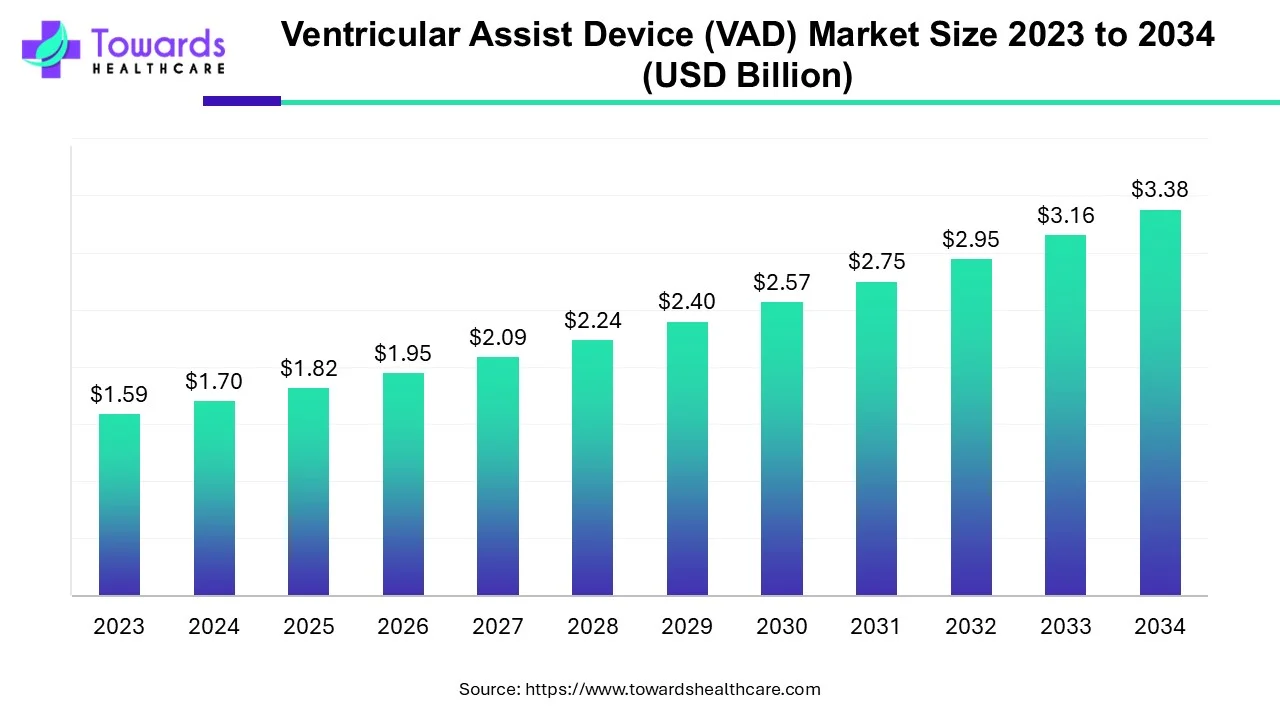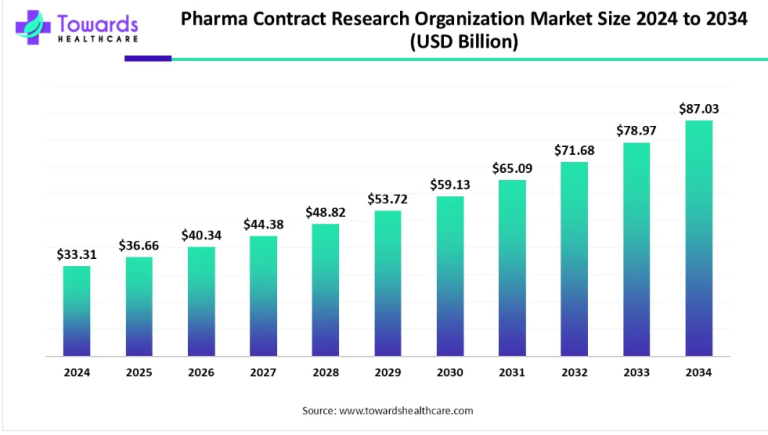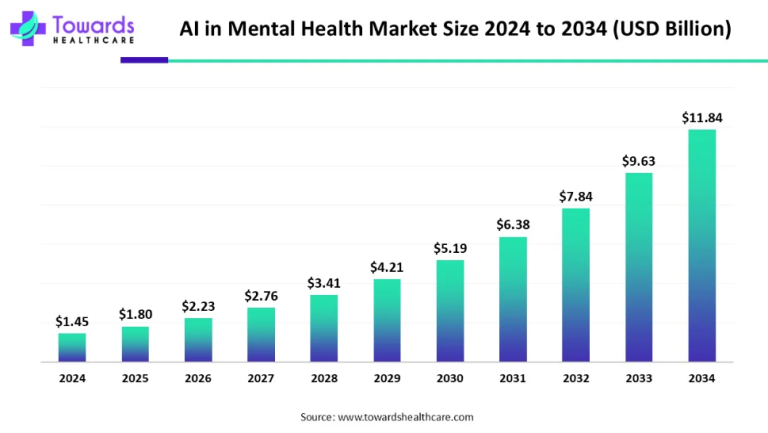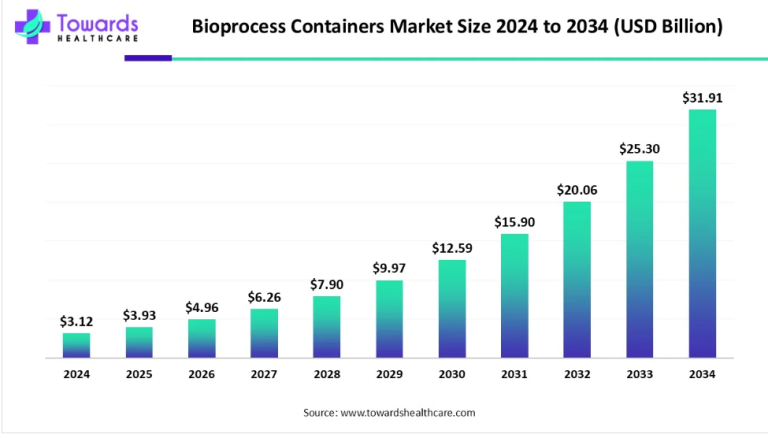The global Ventricular Assist Device (VAD) market was valued at USD 1.59 billion in 2023 and is projected to reach USD 3.08 billion by 2032, with a compound annual growth rate (CAGR) of 7.1% from 2024 to 2032. This growth is driven by increasing rates of heart failure and a growing preference for VADs as a treatment option.

Download a sample of this report @ https://www.towardshealthcare.com/personalized-scope/5151
Key Market Highlights
- LVAD (Left Ventricular Assist Device) dominated the market with a 67% share in 2023.
- Bridge to transplant application held the largest market share, accounting for 42% in 2023.
- North America was the leading region, with a 45% market share in 2023.
Overview of Ventricular Assist Devices (VADs)
A Ventricular Assist Device (VAD) is a mechanical pump used to support heart function in patients whose hearts are unable to pump blood effectively. VADs are surgically implanted and can be used in various scenarios:
- Left Ventricular Assist Devices (LVADs): These are the most commonly used VADs, helping pump oxygen-rich blood from the left ventricle to the rest of the body.
- Right Ventricular Assist Devices (RVADs): These devices pump oxygen-poor blood from the right ventricle to the lungs for oxygenation.
- Biventricular Assist Devices and Pediatric VADs: Used in specific cases depending on the patient’s needs.
VADs can be used as a temporary measure for patients awaiting heart transplants or as a long-term solution (destination therapy) for those ineligible for transplants due to age or other risk factors.
Market Growth Drivers
- Rising Heart Failure Rates: The global increase in heart failure cases, driven by aging populations and longer life expectancies, is a key factor contributing to the growth of the VAD market. Many patients with severe heart failure may have exhausted traditional treatment options like medication and lifestyle changes, making VADs a critical solution.
- Growing Demand for Destination Therapy: While VADs were initially used primarily as a bridge-to-transplant option, their role as a destination therapy has expanded. This approach uses VADs as a permanent treatment for patients who are not candidates for heart transplants, reducing the demand on donor organs and significantly improving patient survival rates and quality of life.
- Advancements in Minimally Invasive Procedures: Recent years have seen a shift towards minimally invasive VAD implantation techniques, such as mini-thoracotomy or robotic-assisted surgery. These methods involve smaller incisions, reduced recovery times, and less discomfort for patients, driving higher adoption rates of VAD therapy.
Challenges Impacting Market Growth
High Costs: The high cost of VADs and their implantation is a significant barrier to market growth. The devices themselves are expensive due to research, development, and manufacturing costs. Additionally, the surgical procedures required to implant them, along with ongoing monitoring and potential device replacements, contribute to the overall high cost.
Opportunities in Emerging Markets
The VAD market shows significant growth potential in developing regions like Asia-Pacific, Latin America, and the Middle East. As these regions experience increased heart failure rates due to aging populations, there is a growing demand for advanced medical treatments, including VADs. Market participants can capitalize on this by forming partnerships with local healthcare providers and introducing cost-effective VAD solutions.
Geographical Insights
- Developed Regions: Countries with advanced healthcare systems, such as the United States and Europe, have a higher prevalence of heart failure and well-established VAD programs, resulting in higher adoption rates.
- Emerging Markets: While countries in the Asia-Pacific and other developing regions present significant growth opportunities, challenges such as limited access to specialized surgeons, devices, and less favorable reimbursement policies may hinder market expansion.
Ventricular Assist Device (VAD) Market Companies
- ABIOMED
- Abbott
- Jarvik Heart, Inc.
- Medtronic plc
- Berlin Heart GmbH
- ReliantHeart Inc.
- Abiomed Inc.
- Cardiac Assist Inc.
- Cirtec
- CorWave SA
- Fineheart
Ventricular Assist Device (VAD) Market Segments
(**We also provide cross-sectional analysis in market segments)
By Device Type
- LVAD
- RVAD
- Biventricular VAD
- Pediatric VAD
By Application
- Bridge to Recovery
- Bridge to Transplant
- Destination Therapy
- Other Applications
By End User
- Hospitals & ASCs
- Specialty Clinics & Others
By Geography
- North America
- Europe
- Asia Pacific
- Middle East and Africa
- South America
Discover our detailed Table of Contents (TOC) for the Industry, providing a thorough examination of market segments, material, emerging technologies and key trends. Our TOC offers a structured analysis of market dynamics, emerging innovations, and regional dynamics to guide your strategic decisions in this rapidly evolving healthcare field – https://www.towardshealthcare.com/table-of-content/ventricular-assist-device-market-sizing
To own our research study instantly, Click here @ https://www.towardshealthcare.com/price/5151
You can place an order or ask any questions, please feel free to contact us at sales@towardshealthcare.com
About Us
Towards Healthcare is a leading global provider of technological solutions, clinical research services, and advanced analytics to the healthcare sector, committed to forming creative connections that result in actionable insights and creative innovations. We are a global strategy consulting firm that assists business leaders in gaining a competitive edge and accelerating growth. We are a provider of technological solutions, clinical research services, and advanced analytics to the healthcare sector, committed to forming creative connections that result in actionable insights and creative innovations.
Explore the comprehensive statistics and insights on healthcare industry data and its associated segmentation: Get a Subscription
For Latest Update Follow Us: https://www.linkedin.com/company/towards-healthcare



